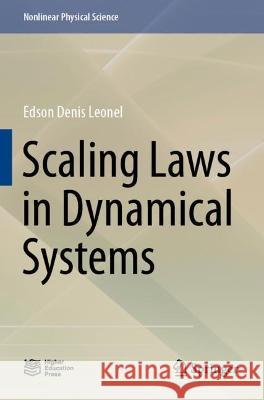Scaling Laws in Dynamical Systems » książka
topmenu
Scaling Laws in Dynamical Systems
ISBN-13: 9789811635465 / Angielski / Miękka / 2022
Scaling Laws in Dynamical Systems
ISBN-13: 9789811635465 / Angielski / Miękka / 2022
cena 605,23
(netto: 576,41 VAT: 5%)
Najniższa cena z 30 dni: 578,30
(netto: 576,41 VAT: 5%)
Najniższa cena z 30 dni: 578,30
Termin realizacji zamówienia:
ok. 22 dni roboczych
Dostawa w 2026 r.
ok. 22 dni roboczych
Dostawa w 2026 r.
Darmowa dostawa!
This book discusses many of the common scaling properties observed in some nonlinear dynamical systems mostly described by mappings. The unpredictability of the time evolution of two nearby initial conditions in the phase space together with the exponential divergence from each other as time goes by lead to the concept of chaos. Some of the observables in nonlinear systems exhibit characteristics of scaling invariance being then described via scaling laws.
From the variation of control parameters, physical observables in the phase space may be characterized by using power laws that many times yield into universal behavior. The application of such a formalism has been well accepted in the scientific community of nonlinear dynamics. Therefore I had in mind when writing this book was to bring together few of the research results in nonlinear systems using scaling formalism that could treated either in under-graduation as well as in the post graduation in the several exact programs but no earlier requirements were needed from the students unless the basic physics and mathematics. At the same time, the book must be original enough to contribute to the existing literature but with no excessive superposition of the topics already dealt with in other text books. The majority of the Chapters present a list of exercises. Some of them are analytic and others are numeric with few presenting some degree of computational complexity.
From the variation of control parameters, physical observables in the phase space may be characterized by using power laws that many times yield into universal behavior. The application of such a formalism has been well accepted in the scientific community of nonlinear dynamics. Therefore I had in mind when writing this book was to bring together few of the research results in nonlinear systems using scaling formalism that could treated either in under-graduation as well as in the post graduation in the several exact programs but no earlier requirements were needed from the students unless the basic physics and mathematics. At the same time, the book must be original enough to contribute to the existing literature but with no excessive superposition of the topics already dealt with in other text books. The majority of the Chapters present a list of exercises. Some of them are analytic and others are numeric with few presenting some degree of computational complexity.











